2.5 km away
Cirque Peak
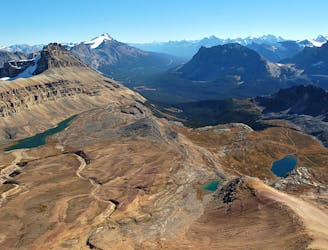
The popular hike to Helen Lake can be extended with this straightforward scramble to the peak overhead.
Easy Alpine Climbing
- Distance
- 16 km
- Ascent
- 1.1 km
- Descent
- 1.1 km

Classic Beginner Mountaineering Route of the Canadian Rockies
Alpine Climbing Moderate

Saint Nicholas Peak is a classic mountaineering objective for budding mountaineers, and it can be spread out over two or three days from the Alpine Club of Canada Bow Hut. While the wild Wapta Icefield weather can challenge even experienced parties, the terrain is mild, and plenty of traffic increases the safety net for new travellers. It is most popular on skis in the spring, but it is possible to do this route nearly every day of the year. Crevasse rescue, avalanche, and whiteout navigation training should be considered essential to do this adventure.
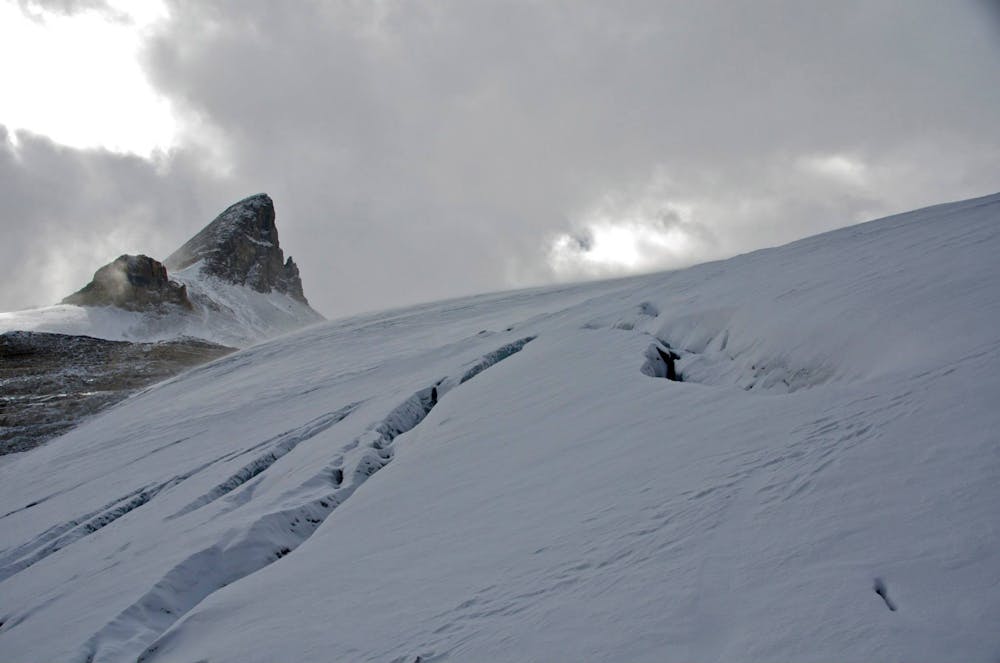
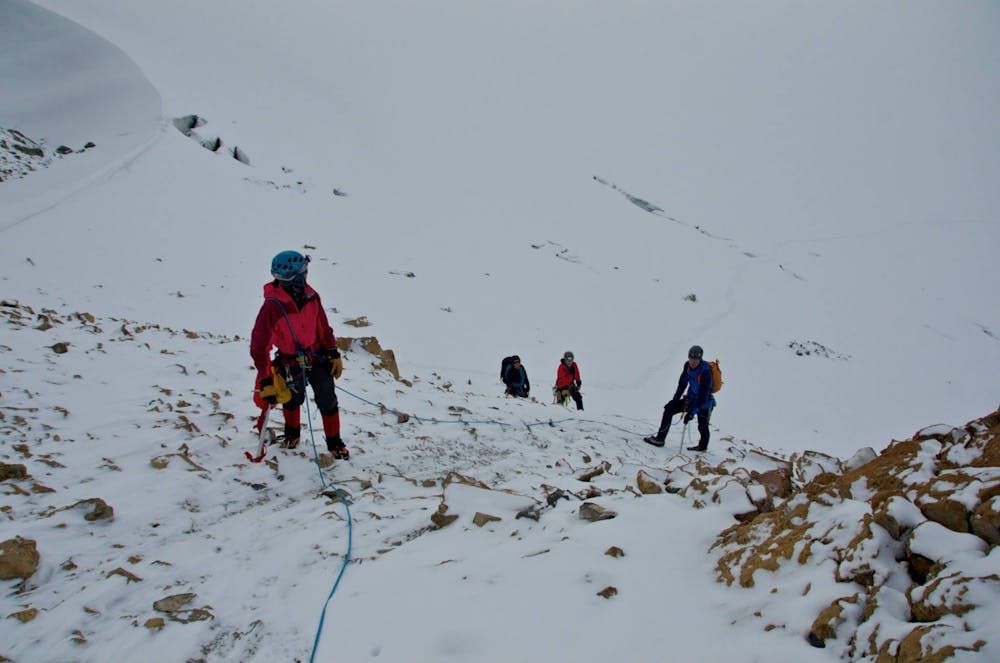
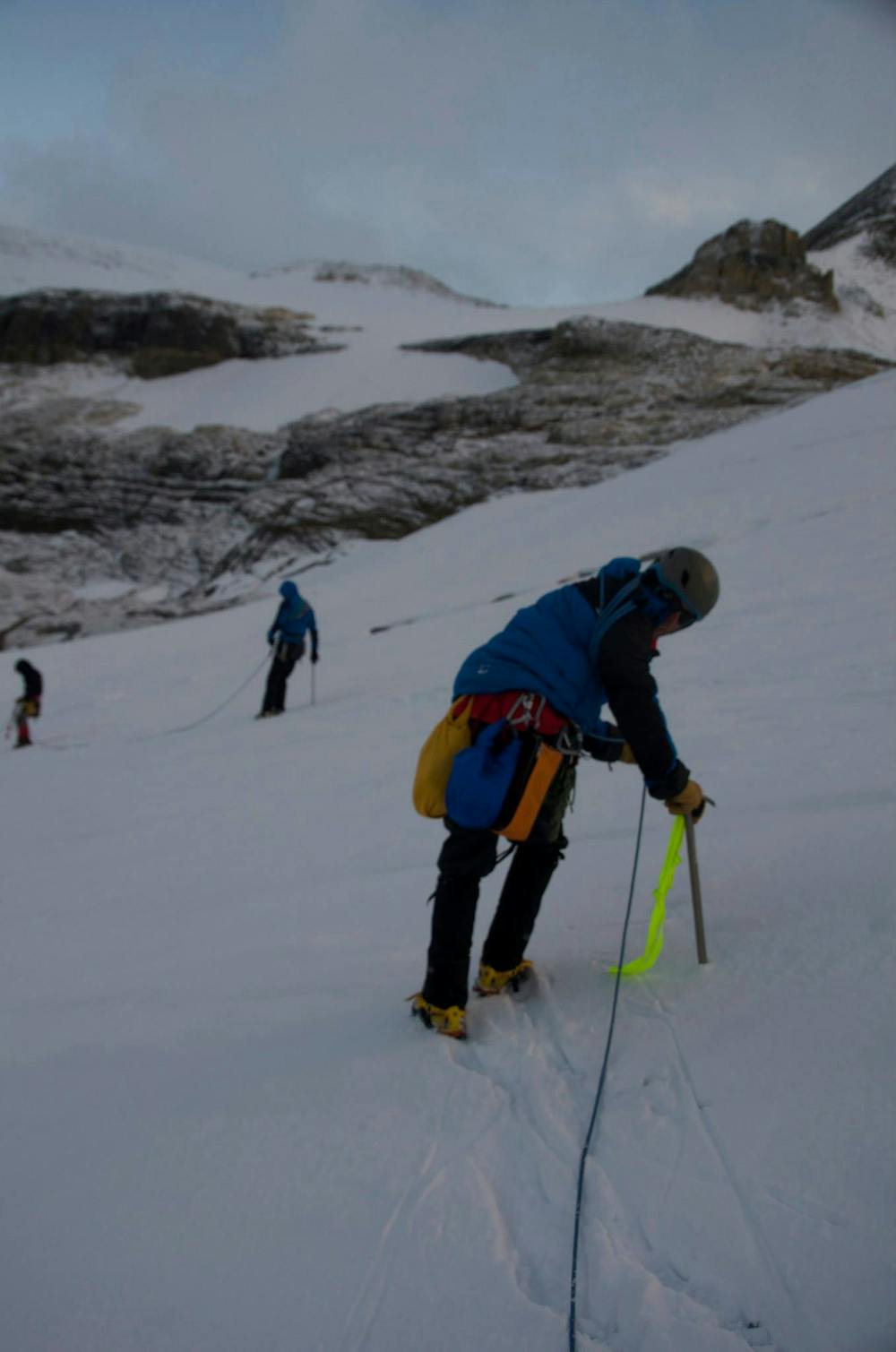
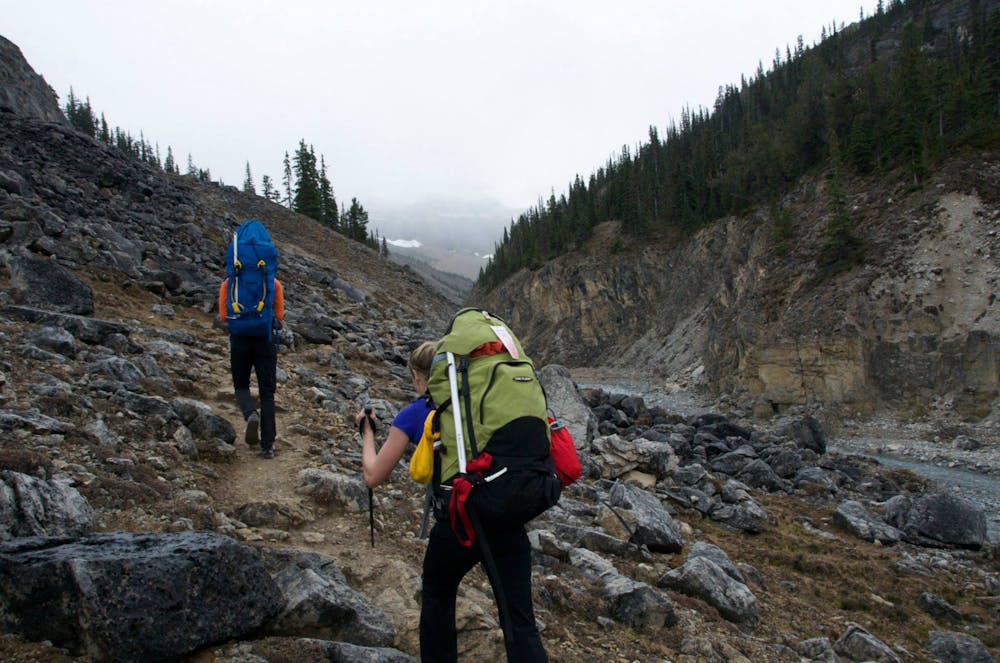
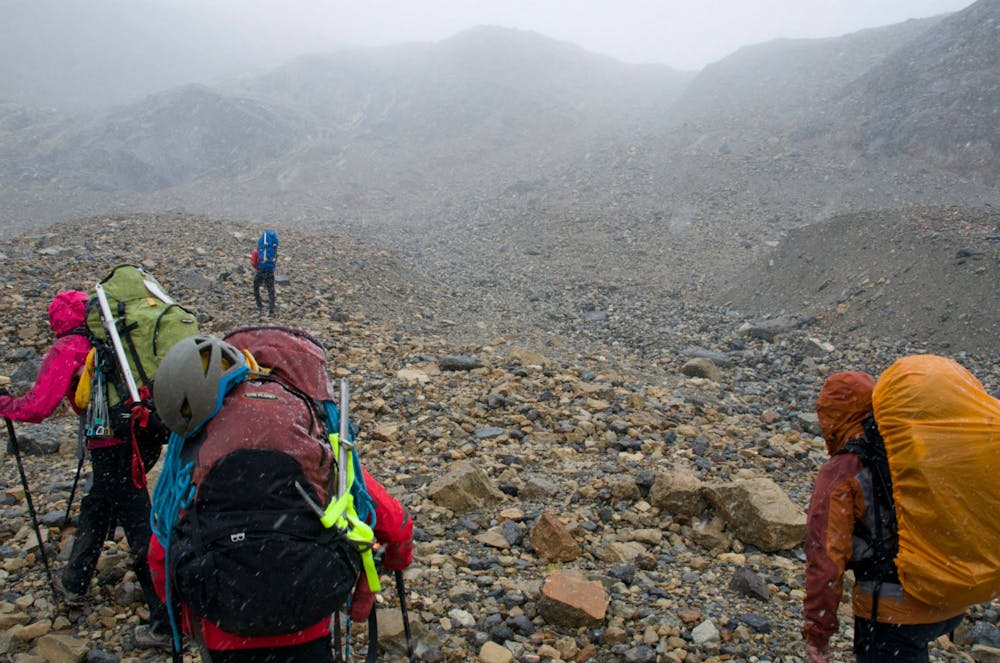
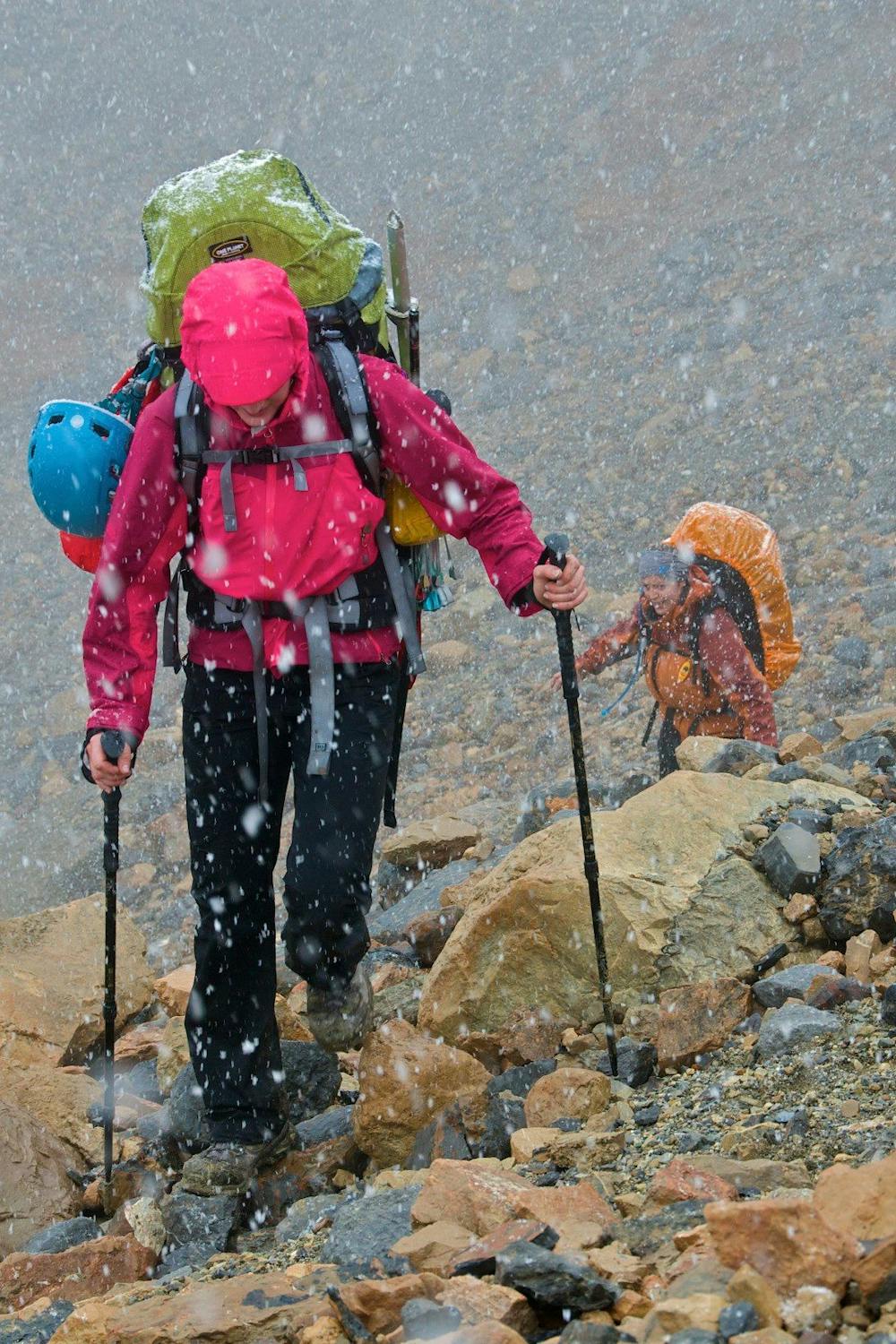
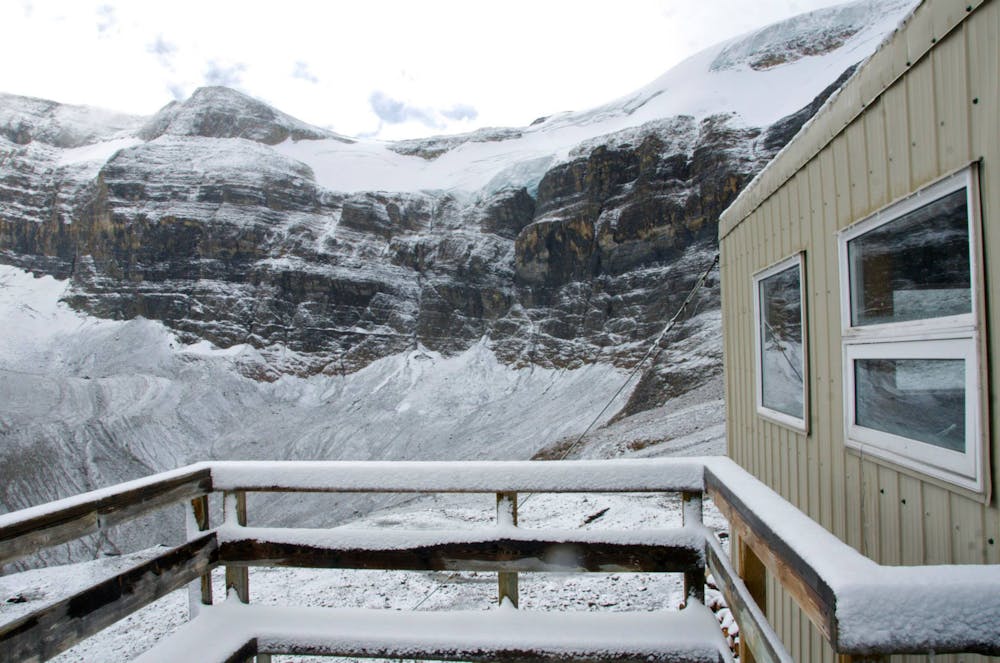

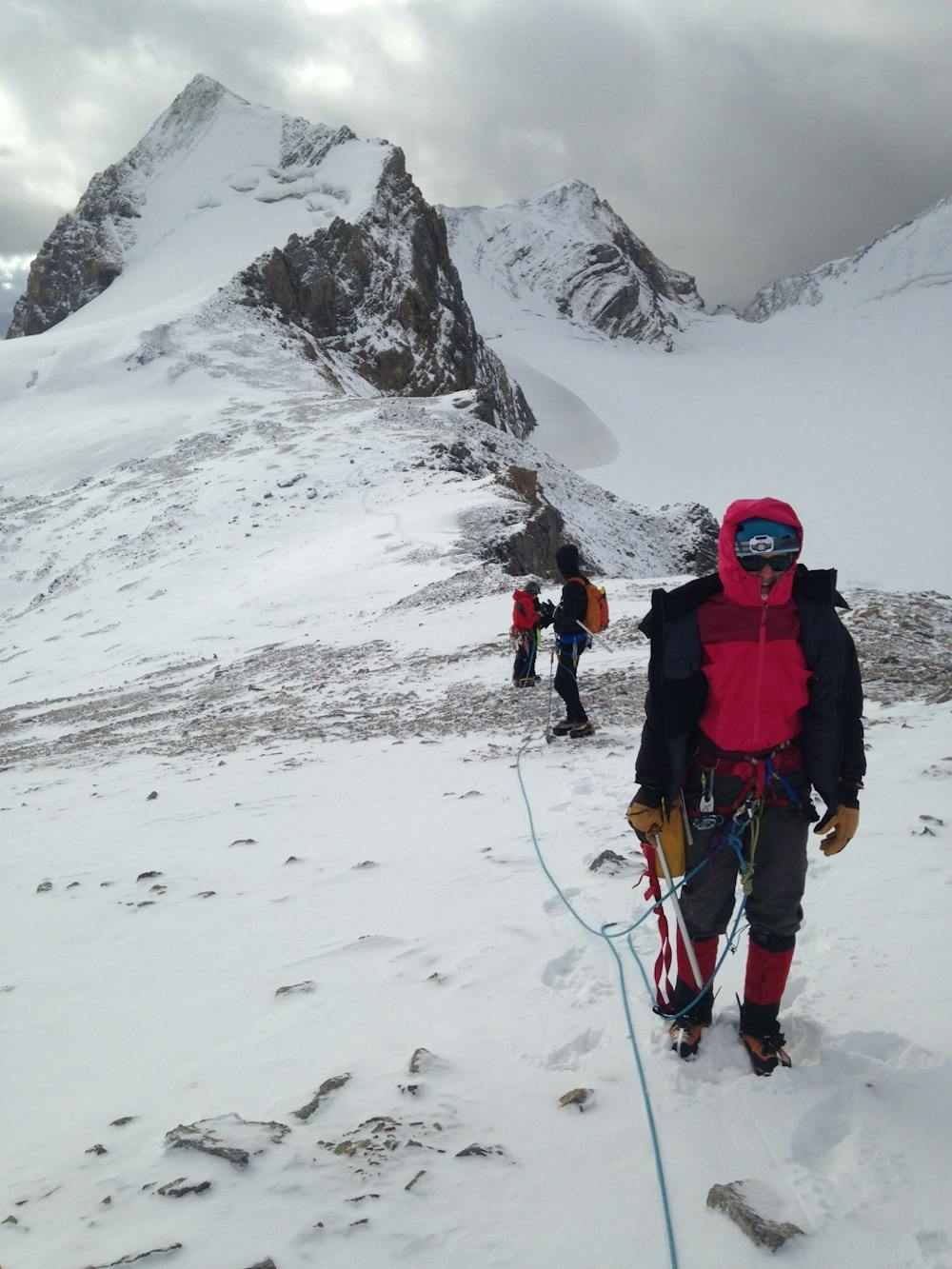


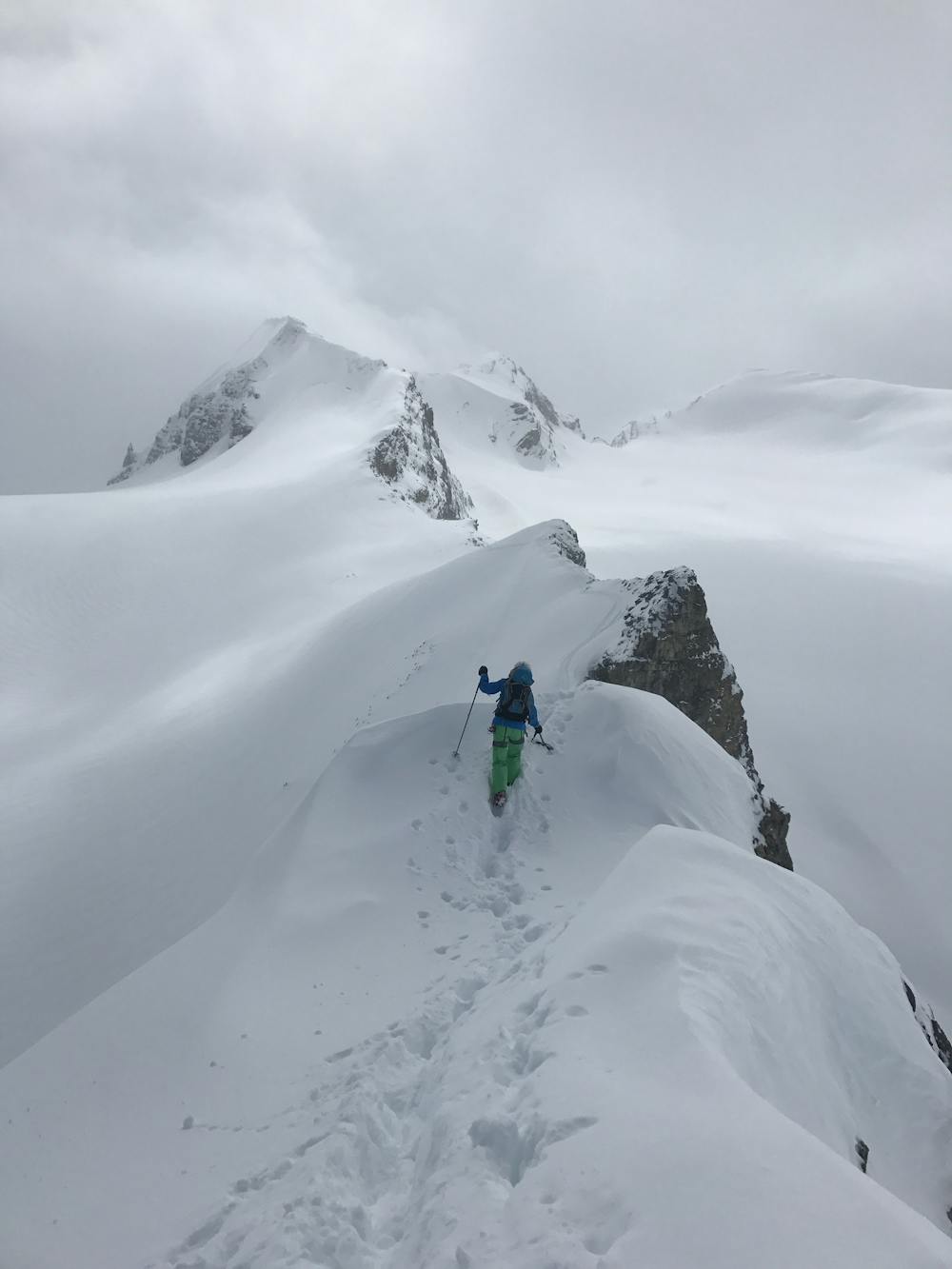
The trailhead is beside the Num-Ti-Jah Lodge on the shores of Bow Lake, about 30 minutes north of Lake Louise. The parking lot has good toilet facilities and is popular enough to deter the thieves that prowl icefield parkway parking lots. The trail starts at a wooden bridge opposite the lodge and continues along or over the lake depending on the season. In summer the trail winds up the side of the canyon, across over a huge chockstone, and along the edge of the canyon. The canyon tapers away and you can see hikers heading to Bow Falls across the river. Your trail ascends once more into the trees above the canyon, eventually emerging beaneath the impressive cirque crowned by the cascading seracs of the vulture glacier.
In winter the skin track passes through the woods to the south of the canyon, circumventing the first stretch before going straight up the canyon and eventually breaking onto the southern slope as the terrain becomes too steep and narrow. A quick jaunt through scraggly trees gains the cirque beneath the Vulture Glacier.
Walking along the flat valley over talus, you should spot the Bow Hut on the ride to the north. There are ramps going up broad gulleys at the western end of the valley. Be warned though, the first or second gulleys are best to take; also, avoid the convex roll. In 2016 a serious avalanche gravely injured someone when they went too far back into the bowl and took the wrong gulley. Be wary, be informed, and be trained when approaching this section in winter. In summer it's less of a concern.
Beyond this is the hut, perched very close to the glacier. The hut is stocked with a wood burning fireplace, mats, propane stoves, and all the corckery required, including French press coffee options. There is even a stove top for those who packed culinary inspiration. The hut stays decently warm, and three season sleeping bags fair well even in the dead of winter. The hut can get very busy and earns it's nickname, "The Bowtel." There are excellent cliffs and open crevasses near the hut that make for superb crevasse rescue practice oppurtunities if people in your group aren't already familiar. It's also a great idea to head here the afternoon before you climb as it's a good chance to scan for crevasses in the best light.
An early start in the morning is required to make the best of conditions. Navigating the glacier can be tricky or simple depending on conditions. You basically take a big "J" turn avoid the area directly beneath Saint Nicholas Peak as you climb the gradually flattening Bow Glacier. Move down beside the steep west face until you reach a steep wind-blasted talus field that breaks the col between Saint Nicholas and Mount Olive. Normally this is too rocky to ski up even in winter
From here you move along the edge ridge of Saint Nicholas as it gets gradually steeper. About two-thirds of the way along you drop lower and then move across the face about 20 meters before climbing up once more. Beyond this there is a airy traverse; step climbers right of a big block into a final narrow gulley to the summit. In winter this can be very straightforward snowclimbing, though late in the summer it is often just a tricky limestone scramble with ample loose rock.
The descent in summer is reversing the way you've come. Many people also climb Mount Olive in the same trip because it requires very little extra effort. From the col it is roughly a one- or two-hour adventure. Skiers normally opt to descend by skiing the east face of Saint Nicholas back toward the hut through the moraines. The ski is often good and offers blue and black runs, but care must be taken as avalanches are common of the west face higher up and in the gulleys lower down.
Moderate
May involve slightly more complex glacier hikes, easy but possibly long rock ridges and steep snow up to 45 degrees. Equivalent to PD, PD+
2.5 km away

The popular hike to Helen Lake can be extended with this straightforward scramble to the peak overhead.
Easy Alpine Climbing

6 routes · Alpine Climbing · Hiking
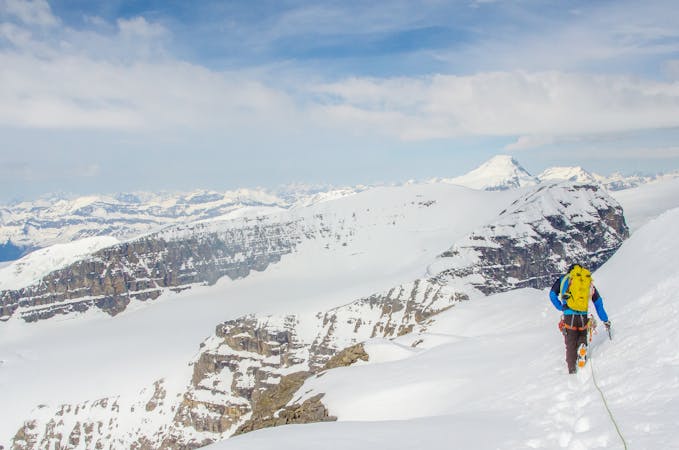
10 routes · Alpine Climbing · Hiking · Trail Running